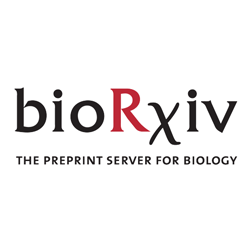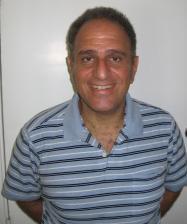
Hormozdiari Lab
@DavisCompGen
Followers
697
Following
4K
Media
11
Statuses
981
Hormozdiari Lab @ UC Davis
Davis, CA
Joined October 2015
Our preprint on the challenges of benchmarking Structural Variants (SVs) is out in BioRxiv
biorxiv.org
Structural variants (SVs) are medium and large-scale genomic alterations that shape phenotypic diversity and disease risk. Numerous methods have been proposed for discovering SVs, however their...
3
9
21
From Dr. Bryant Lin, Stanford I'm living in insurance hell!!! 1) I am a Stage 4 Lung Cancer patient and advocate. 2) As a medical school Clinical Professor, I taught a class at Stanford anchored around my own case which was covered widely in the The New York Times, CBS Mornings,
3
24
69
Glad to present Unico, our new distribution-free method for deconvolving bulk omic to uncover cell-type-level insights (with results on recapitulating B cell profile in FL tumor expression and high consistency in cell-type-level methylation association):
genomebiology.biomedcentral.com
Most population-scale genomic datasets collected to date consist of “bulk” samples obtained from heterogeneous tissues, reflecting mixtures of different cell types. We introduce Unico, a Unified...
0
5
13
Do you know ~60% of human SVs fall in ~1% of GRCh38? See our new preprint: https://t.co/ZdP2r83KI8 and the companion blog post on how we started this project and longdust: https://t.co/a9W6nXmslz. Work with @QianAlvinQin1
3
89
329
Now preprinted at https://t.co/ffgwN8NC11
Longdust, a new tool to identify highly repetitive STRs, VNTRs, satellite DNA and other low-complexity regions (LCRs). Similar to SDUST but for long regions. https://t.co/xUFgpmatJ5
3
32
102
Happy to share the latest work from the lab! We long-read sequenced single-cell derived melanoma subclones to reconstruct complete view of tumor evolution. With phylogeny, we can see parallel structural evolution and lineage-specific methylation.
biorxiv.org
Tumor evolution is driven by various mutational processes, ranging from single-nucleotide vari- ants (SNVs) to large structural variants (SVs) to dynamic shifts in DNA methylation. Current short-read...
0
6
35
0
0
0
To streamline and standardize the SV evaluation task, we developed a framework, freely available at https://t.co/TqG9aYY45y, which allows to benchmark old and new SV callers against a diverse collection of truth sets
github.com
Contribute to ldenti/svbench-fw development by creating an account on GitHub.
1
0
1
Interestingly, the ranking of the methods changed based on the version of GIAB callset used as ground truth highlighting that the performance of callers is not readily transferable between “ground truths” without consideration of their limitations and differences.
1
1
1
All tools exhibit great accuracy wrt v0.6 callset but we observed a considerable drop in their performance when evaluated against the more complete curated SV callset (especially when considering CHM13).
1
0
0
We also compared them to the GIAB v0.6 callset and the very recently released GIAB v1.1 callsets.
1
0
0
We evaluated long-read based callers against assembly-based callsets and we observed substantial variation in their performance, depending on the choice of ground truth, reference genome, and genomic regions used for evaluation.
1
2
6
The overall similarity among these callsets decreases as the completeness of the reference genome increases.
1
0
0
On confident regions of the genome, the three assembly-based callers provide callsets with similarity as high as 87% while on full genome the similarity decreases to 46%.
1
0
0
We compared the three assembly-based callers and we observed substantial differences in the properties of the generated SV callsets.
1
0
0
We identified critical and often unexpected divergence in the performance evaluations of SV callers, largely driven by commonly applied user-defined choices in analysis workflows
1
0
0
We extensively tested 3 assembly-based callers, 8 long-reads-based callers, 2 truvari modes (bench and refine) on the 3 major human reference genomes (GRCh37, GRCh38, and T2T-CHM13)
1
0
0
Many methods have been proposed for discovering SVs, however their benchmarking has been inconsistent across studies, often resulting in contradictory findings.
1
0
0
Amazing work and achievement!
🌎👩🔬 For 15+ years biology has accumulated petabytes (million gigabytes) of🧬DNA sequencing data🧬 from the far reaches of our planet.🦠🍄🌵 Logan now democratizes efficient access to the world’s most comprehensive genetics dataset. Free and open. https://t.co/dDBtAjfdYL
0
0
4
“As a public university, we are stewards of taxpayer resources, and a payment of this scale would completely devastate our country’s greatest public university system as well as inflict great harm on our students and all Californians.” —UC President James B. Milliken
Breaking News: A Trump administration settlement proposal demands more than $1 billion from UCLA. It calls for the payout to contribute to a claims fund that would compensate victims of civil rights violations after a pro-Palestinian protest on campus.
9
68
195











